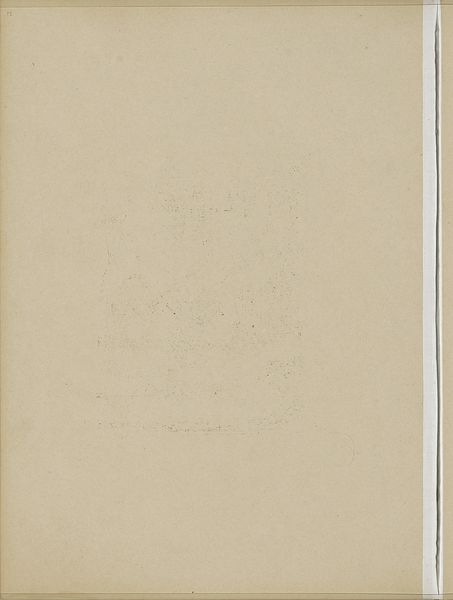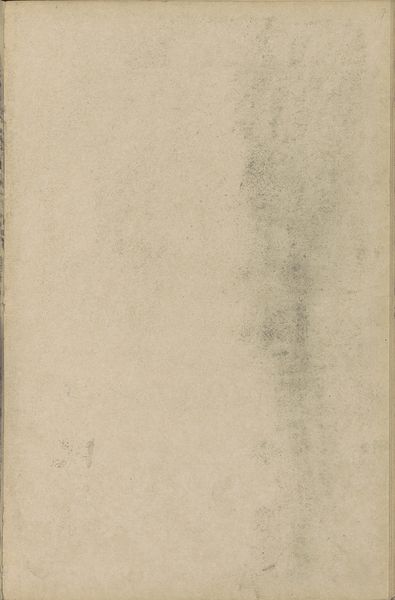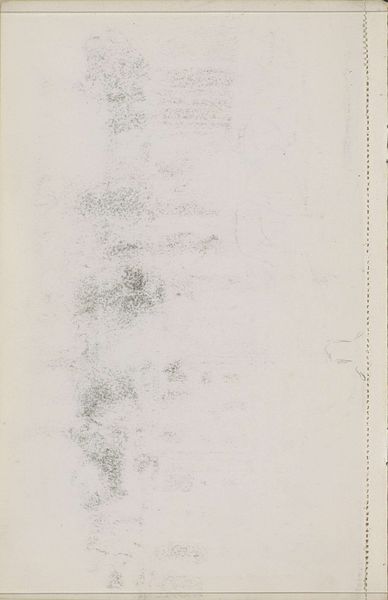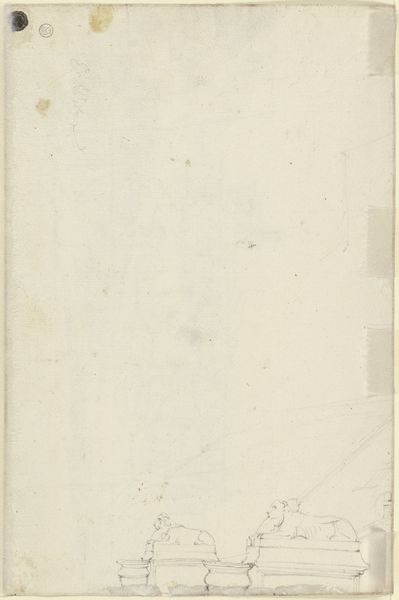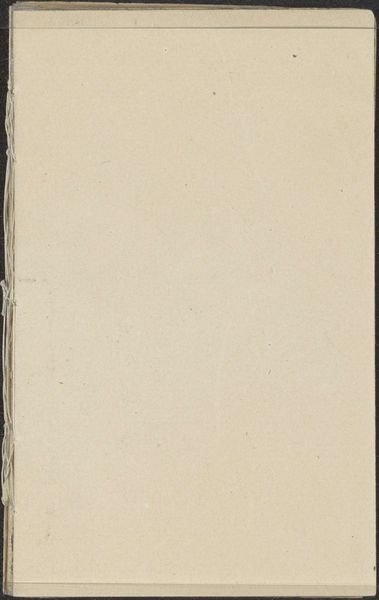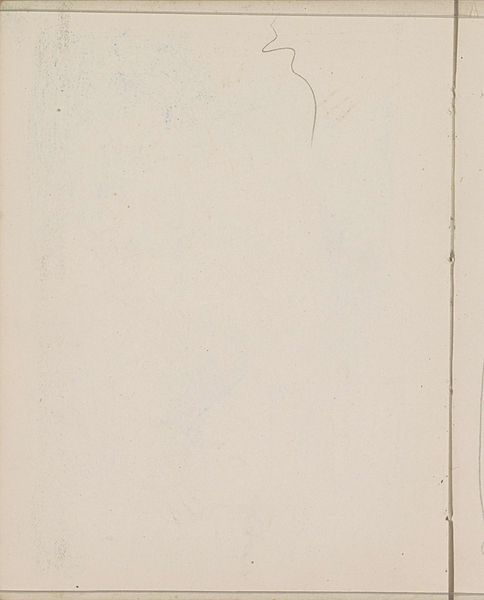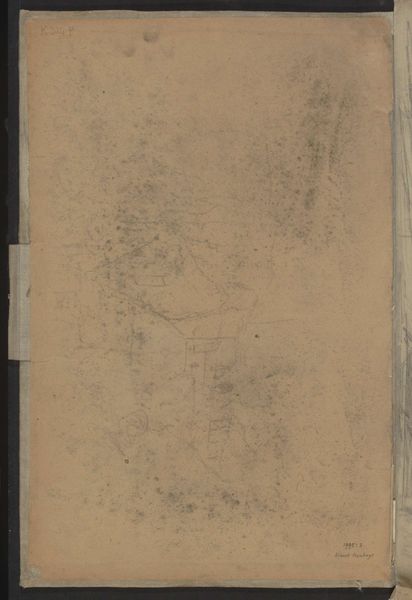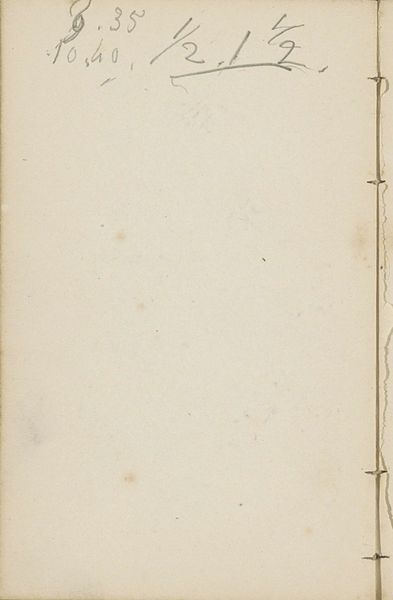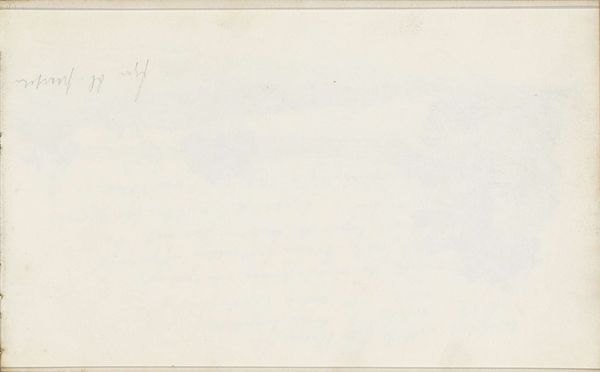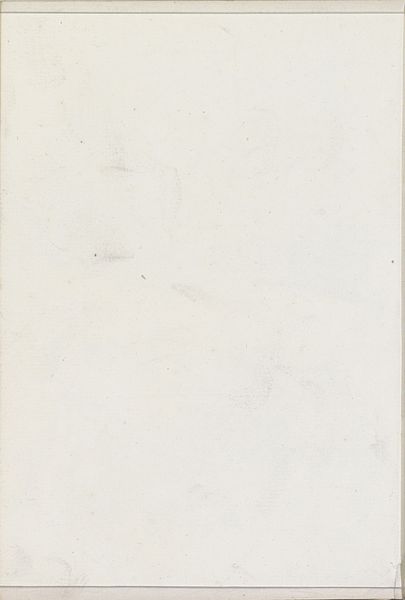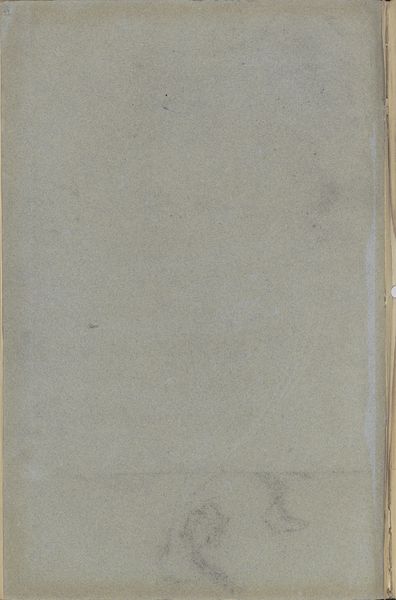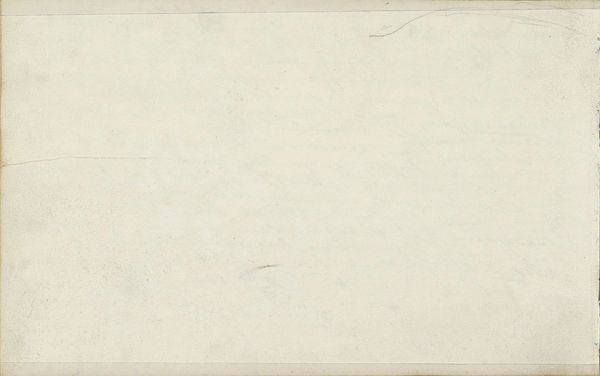
drawing, paper, graphite
#
drawing
#
paper
#
abstract
#
graphite
#
modernism
Copyright: Rijks Museum: Open Domain
Curator: We’re looking at "Abklatsch van de krijttekening op pagina 43", a work on paper created using graphite by Isaac Israels, sometime between 1886 and 1903. Editor: Oh wow, talk about minimalist! It looks like a ghost trying to remember what it was like to be a drawing. There's a subtle, almost dreamlike quality to it, wouldn't you say? It is kind of hauntingly beautiful. Curator: Precisely. I think it invites us to consider the conditions of artistic production in the late 19th century. The "Abklatsch" – essentially a transfer or a rubbing – points to a reproductive method that was also quite experimental. We could even consider the impact of industrial printing and reproduction on Israels’ approach to mark-making. How does that sit with your feeling that it is "hauntingly beautiful?" Editor: Well, maybe the beauty comes from the echo. Like hearing a faint, old song on a scratched record. You get hints of the original, but the distortions are part of its charm. It whispers of what it once was. Thinking about how this was "reproduced", I cannot help wonder if its kind of accidental state lends this art some agency or uniqueness, in ways unintended by its author. Curator: It is suggestive to think about this abstract composition not simply as a residue of artistic process, but as a commentary on the changing relationship between art and reproducibility. If you think about the way it exists on a page… page 43 to be exact… perhaps this creates a broader dialog on narrative and sequential unfolding. How does this page contribute to a larger understanding? Editor: Hmm... I dig it. It is a conversation starter. For me, it's less about industrialization and more about the personal story of the piece. Almost a journal page... or the evidence of an idea that's been wiped almost clean, ready for something new. Curator: In that spirit, perhaps we can consider how art serves as both an end, but also an important means to broader societal change and understanding? Editor: Exactly. Art is what *happens* in between the start and end, isn't it? I think its appeal lies in its very state of incompleteness.
Comments
No comments
Be the first to comment and join the conversation on the ultimate creative platform.
